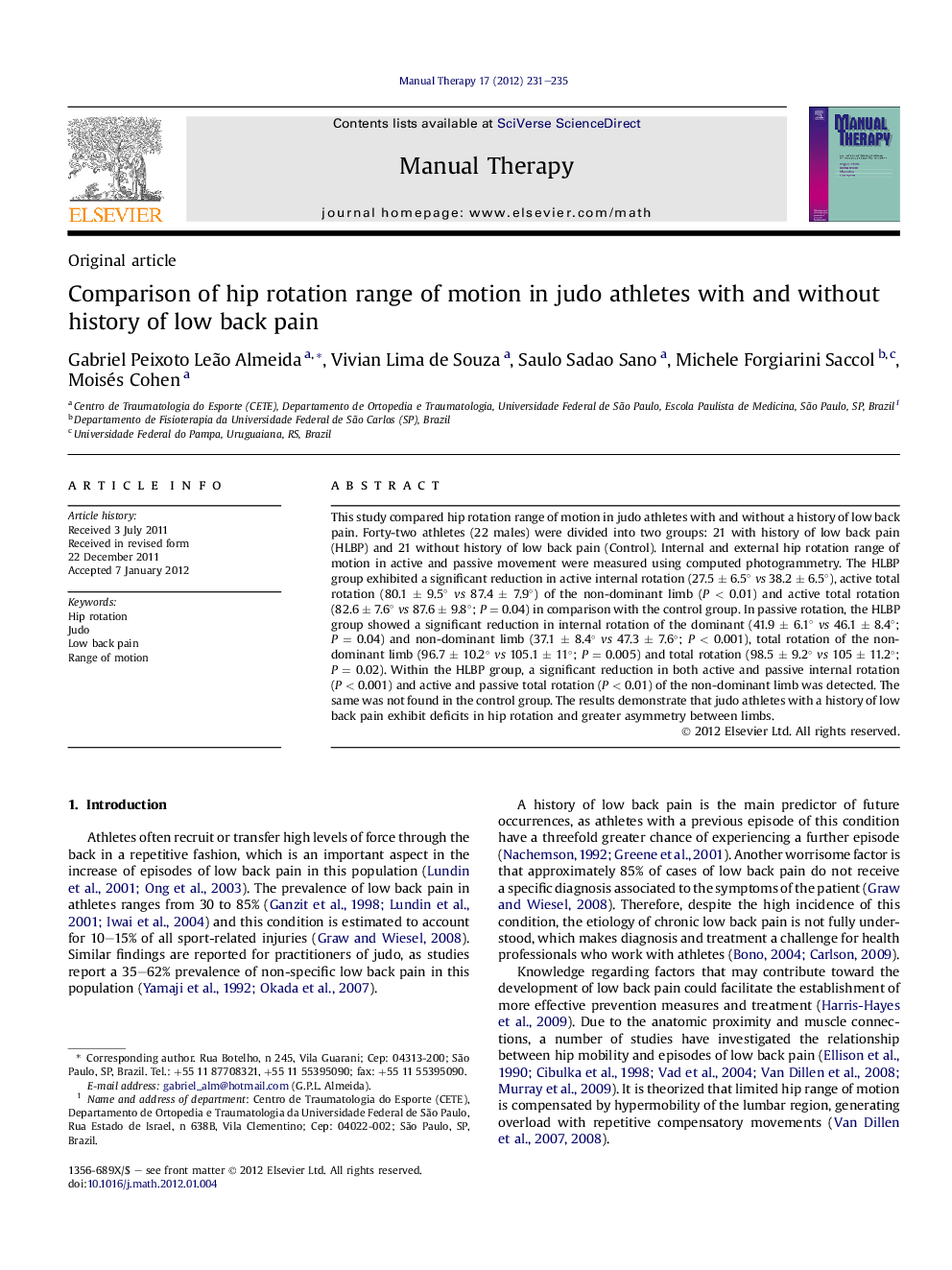| کد مقاله | کد نشریه | سال انتشار | مقاله انگلیسی | نسخه تمام متن |
|---|---|---|---|---|
| 2625422 | 1135944 | 2012 | 5 صفحه PDF | دانلود رایگان |

This study compared hip rotation range of motion in judo athletes with and without a history of low back pain. Forty-two athletes (22 males) were divided into two groups: 21 with history of low back pain (HLBP) and 21 without history of low back pain (Control). Internal and external hip rotation range of motion in active and passive movement were measured using computed photogrammetry. The HLBP group exhibited a significant reduction in active internal rotation (27.5 ± 6.5° vs 38.2 ± 6.5°), active total rotation (80.1 ± 9.5° vs 87.4 ± 7.9°) of the non-dominant limb (P < 0.01) and active total rotation (82.6 ± 7.6° vs 87.6 ± 9.8°; P = 0.04) in comparison with the control group. In passive rotation, the HLBP group showed a significant reduction in internal rotation of the dominant (41.9 ± 6.1° vs 46.1 ± 8.4°; P = 0.04) and non-dominant limb (37.1 ± 8.4° vs 47.3 ± 7.6°; P < 0.001), total rotation of the non-dominant limb (96.7 ± 10.2° vs 105.1 ± 11°; P = 0.005) and total rotation (98.5 ± 9.2° vs 105 ± 11.2°; P = 0.02). Within the HLBP group, a significant reduction in both active and passive internal rotation (P < 0.001) and active and passive total rotation (P < 0.01) of the non-dominant limb was detected. The same was not found in the control group. The results demonstrate that judo athletes with a history of low back pain exhibit deficits in hip rotation and greater asymmetry between limbs.
Journal: Manual Therapy - Volume 17, Issue 3, June 2012, Pages 231–235